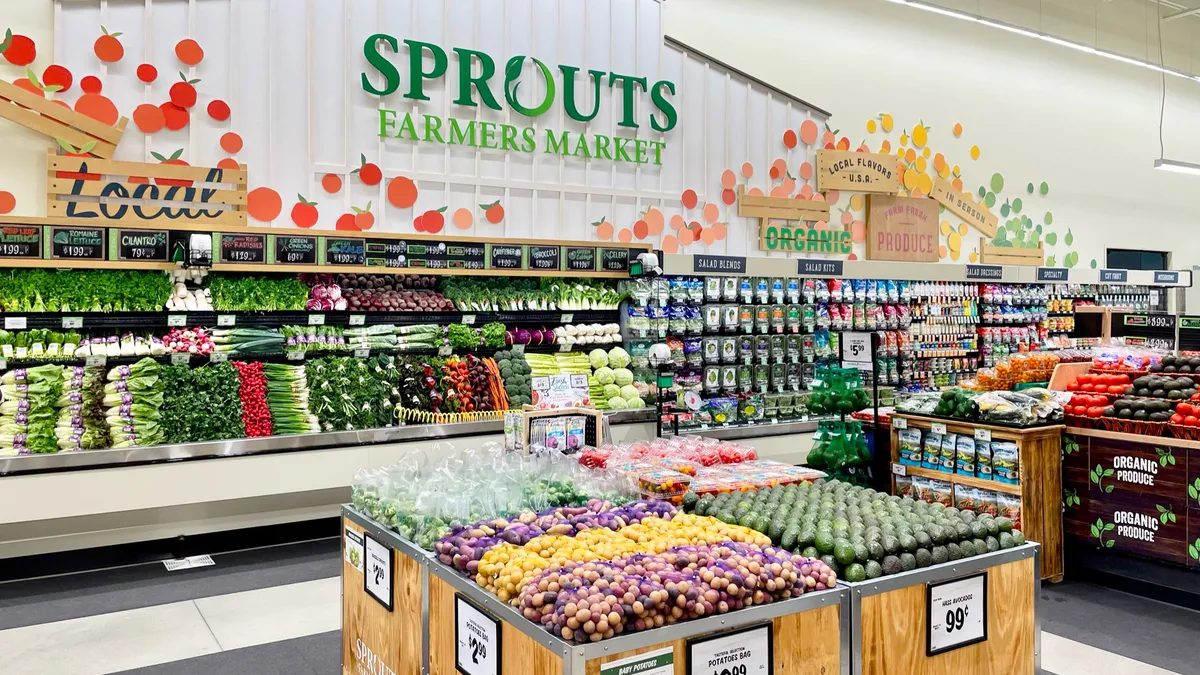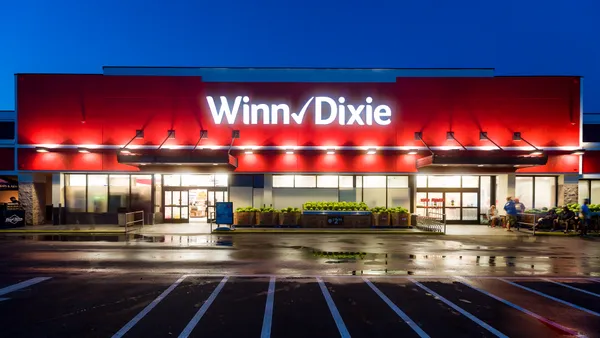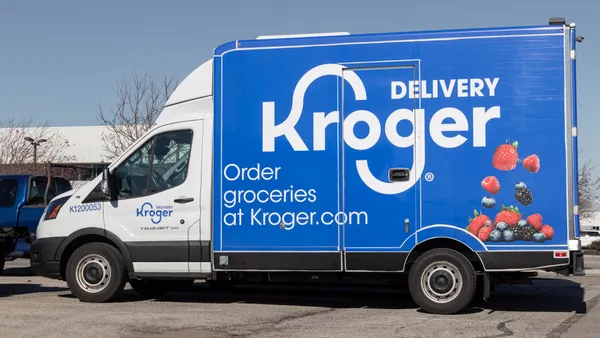Dive Brief:
- Sprouts Farmers Market recorded a 19% increase in e-commerce sales during the third quarter of 2022, with online orders accounting for 11.1% of the company’s total sales during the period, Chief Financial Officer Chip Molloy said during an earnings call Tuesday.
- The specialty retailer posted comparable-store sales growth of 2.4% during Q3, while net sales hit $1.6 billion, up 5% from the same period last year. Quarterly earnings per share rose 9% on a year-over-year basis.
- Sprouts has been concentrating in recent quarters on stabilizing its financial performance as it looks to expand its operations and build stronger connections with shoppers.
Dive Insight:
While Sprouts has recently encountered headwinds as it looks to expand its physical store count, the health-focused grocery chain remains committed to opening new stores at a quicker pace during the months ahead, CEO Jack Sinclair said during the earnings call.
The company opened one new store during Q3 and is on track to open 16 new locations by the end of the year, Sinclair said. Sprouts hopes to debut at least 30 new locations in 2023 and wants to add stores at an annual clip of 40 or more by 2024, he said.
Sprouts has started using a real estate tool that provides guidance on where it should open new locations and predicts sales for those stores, and has concluded that the grocery market in the continental United States could support nearly 1,000 more stores than the company currently operates, according to Sinclair.
Sinclair noted that shoppers have lately been buying less produce as they look to cut back on the number of items they buy even though the company endeavors to offer fruits and vegetables at competitive prices.
“As I think this one through, our produce business is being affected more by the economic environment than by a change in our model,” Sinclair said. “Produce remains at the heart and the center of our proposition to the customer, a significant proportion of our sales come in produce.”
While produce still plays a central role in Sprouts’ position in the market, the company has been buoyed recently by other parts of the store, including the bakery, grocery, dairy and frozen departments, Molloy said. Deli was Sprouts’ top-performing category, reprising its strong performance during Q2, he said.
Molloy said that while Sprouts had been incorporating larger deli areas where shoppers could see items being prepared into its store designs, the company has decided that it is better off leaning on self-service in those sections. “We don't need to have that type of elaborate fixturing and that elaborative labor and that much square footage in a given box to be able to be really good at deli,” Molloy said.
Sinclair said Sprouts has been taking steps to build ties with customers and better understand their shopping habits. The company can now connect about 16% of its transactions with individual shoppers, up from 12% one year ago, and the percentage of transactions connected with customers in its loyalty program is up by half during that time, he said.
Neil Saunders, managing director of GlobalData Retail, said he thinks Sprouts’ results signal “early signs of progress” as it looks to improve its performance.
“Much of the work Sprouts needs to do is about adaptation to a changing consumer and retail environment – something that requires new thinking and more experimentation. The underlying business remains strong and, over the longer-term, we see plenty of scope for both physical and digital expansion,” Saunders noted in emailed comments.










